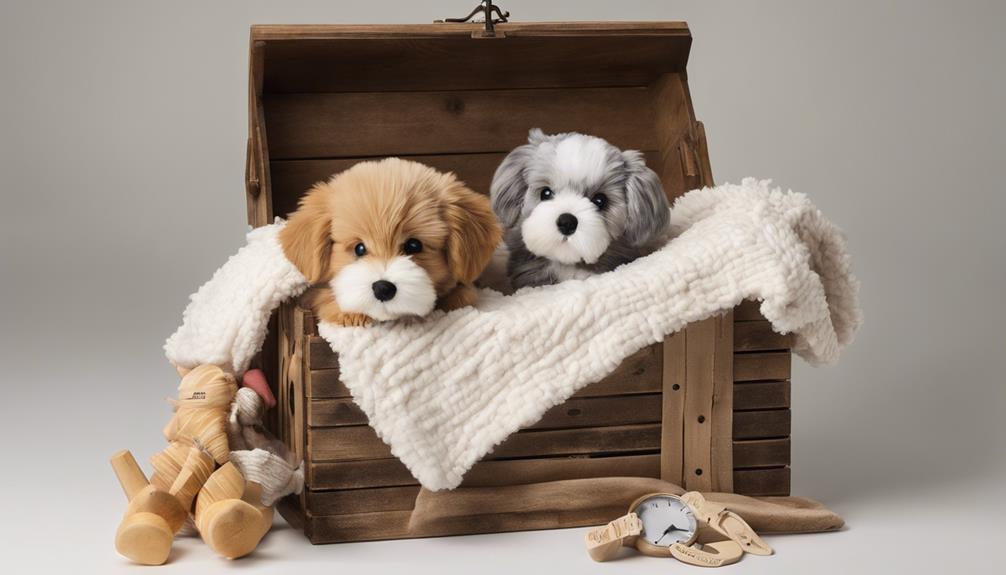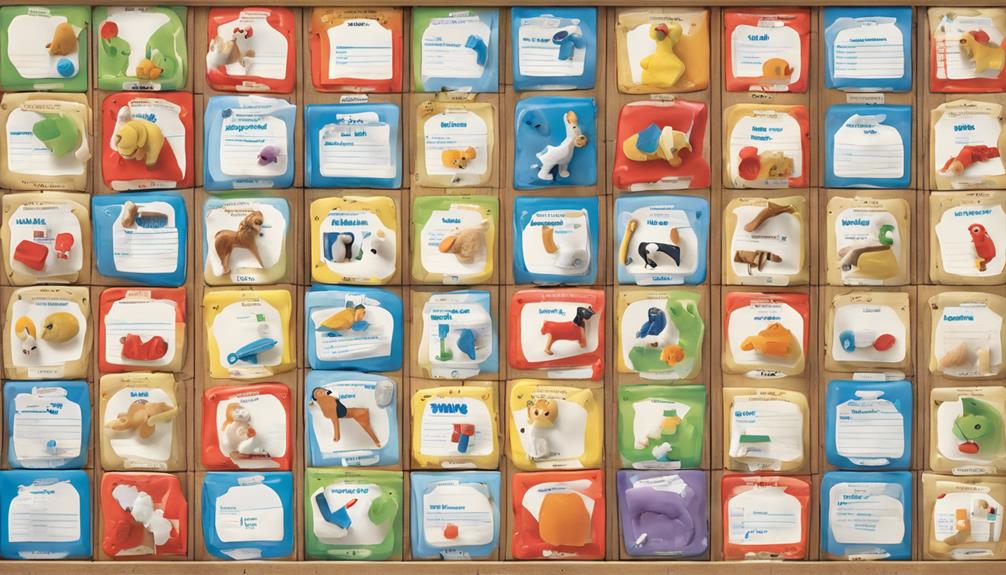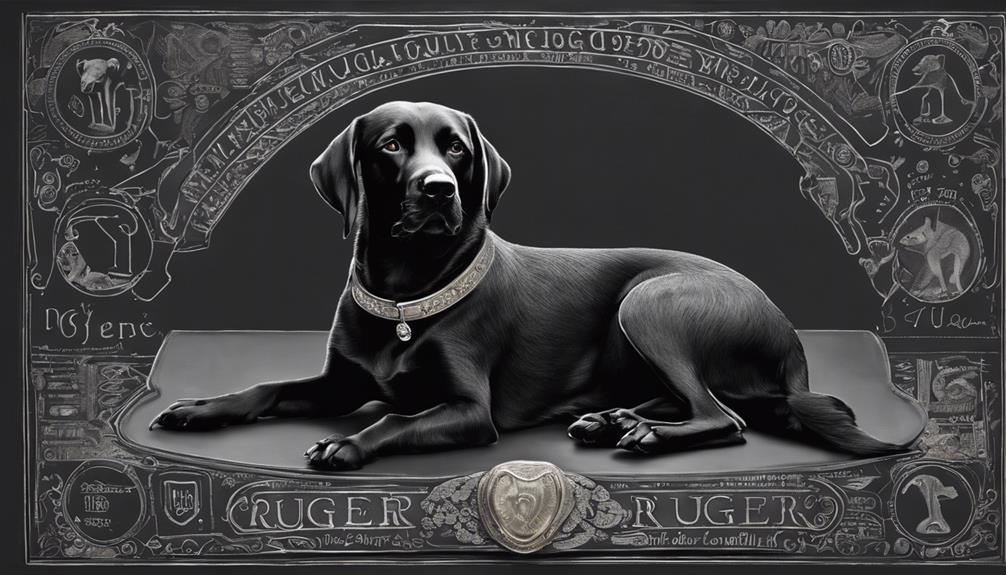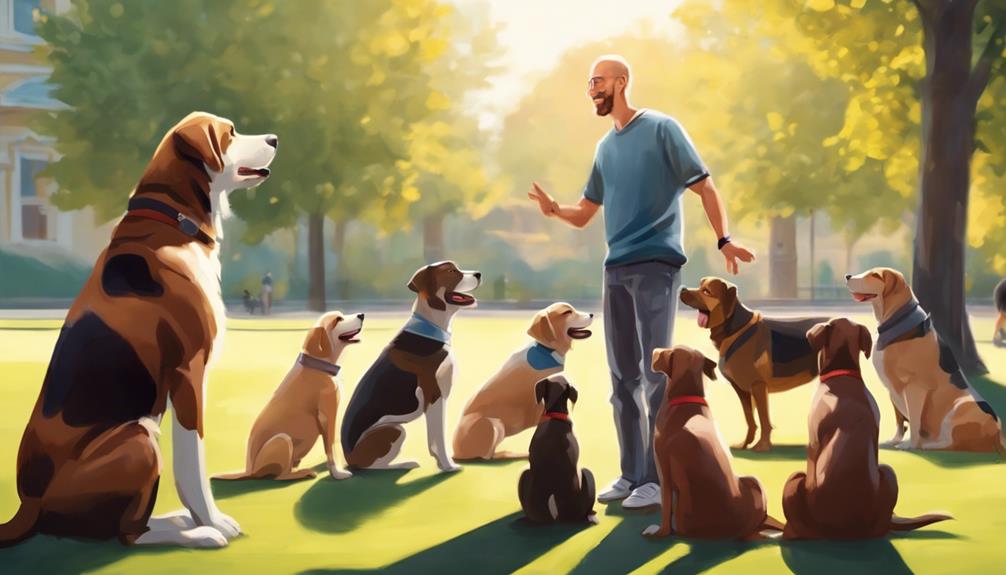Crate training our 8-week-old puppy is crucial for effective house training and shaping behavior. Starting crate training early aids in controlling bladder and establishing a secure routine during this critical development phase. Following a structured crate training schedule will lay the groundwork for a well-mannered and joyful puppy. Our sample schedule includes potty breaks, meals, playtime, and nap time in the crate.
Consistency and positive reinforcement are key. Mastering these basics will pave the way for a smooth training journey with our furry friend.
Key Takeaways
- Establish a consistent routine for meals, play, potty breaks, and crate time.
- Use positive reinforcement and rewards to create a positive association with the crate.
- Include short training sessions to build good behavior habits early on.
- Ensure the crate is comfortable with bedding, toys, and a familiar scent.
- Gradually increase crate time to help the puppy adjust and feel secure.
Benefits of Crate Training
Crate training offers numerous benefits for both puppies and their owners. When it comes to house training, using a crate can help puppies learn to control their bladder and establish a routine for potty breaks. This training method not only aids in house training but also assists in preventing unwanted behaviors such as chewing on furniture or having accidents indoors.
Moreover, crate training can be particularly beneficial in addressing separation anxiety in puppies. By creating a positive association with the crate as a safe space, puppies feel more secure when left alone. This sense of security helps reduce anxiety and stress levels when the owner isn't around. Additionally, the crate serves as a retreat for puppies when they feel overwhelmed or need some downtime, promoting a sense of comfort and security.
Importance of Crate Training Schedule
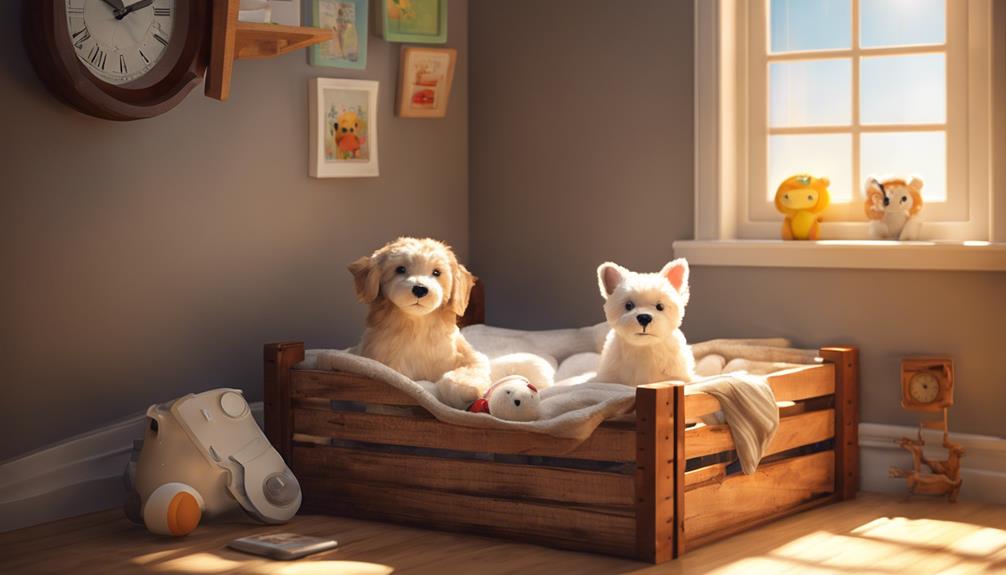
To ensure successful crate training for puppies, establishing a consistent schedule is crucial in promoting effective bladder control and house training. A structured crate training schedule plays an essential role in shaping a puppy's behavior and setting them up for success.
Here are some key points highlighting the importance of a crate training schedule:
- Promotes Routine: A regular schedule helps puppies understand when it's time to eat, play, potty, and rest, creating a sense of predictability.
- Builds Positive Association: By following a structured routine, puppies learn to associate the crate with safety, comfort, and a designated potty area.
- Enhances Training Efficiency: Consistency in timing and activities aids in speeding up the house training process, making it easier to potty train a puppy effectively.
Establishing a structured crate training schedule not only helps in preventing accidents but also fosters a positive environment for your new puppy to thrive in their training journey.
Starting Crate Training Early
When beginning crate training early, we set our puppies up for success by helping them adapt to the routine from a young age.
Establishing this routine quickly aids in their understanding of where to rest and when to expect meal times.
Benefits of Early Training
Why is it important to start puppy crate training at a young age for their overall well-being and development?
Crate training at 8 weeks old provides numerous benefits:
- Establishes positive associations with the crate early on.
- Helps with house training and bladder control.
- Allows puppies to adapt to a routine and feel secure in their environment.
Starting crate training early not only aids in preventing bad behavior by offering a safe space for puppies to retreat to but also assists in creating a sense of consistency and security. This foundational training sets the stage for a well-adjusted and well-behaved companion in the future.
Establishing Routine Quickly
Starting crate training early sets the groundwork for a seamless routine that fosters your puppy's comfort and confidence in their new surroundings. At 8 weeks old, puppies are primed for learning and adapting to new environments. Introducing the crate from the start helps in their acclimation process.
Gradually exposing them to the crate during the day, with positive reinforcement, allows them to associate it with importance and comfort. It's essential to avoid leaving the puppy in the crate for extended periods initially to prevent stress. By making the crate inviting and using positive reinforcement techniques, the puppy will quickly learn to view it as a secure retreat.
Establishing this routine early on will pave the way for successful crate training in the future.
Building Positive Associations
Introducing the crate early on sets the foundation for a positive association, creating a secure and inviting space for your puppy to feel comfortable and at ease.
When acclimating your 8-week-old puppy to the crate, consider:
- Gradual Introduction: Start by leaving the crate door open, allowing your puppy to explore at their own pace.
- Positive Reinforcement: Encourage your puppy to enter the crate with treats or toys to associate it with positivity.
- Short Periods of Time: Initially, keep crate time short to avoid anxiety and establish a welcoming environment.
Training an Older Dog
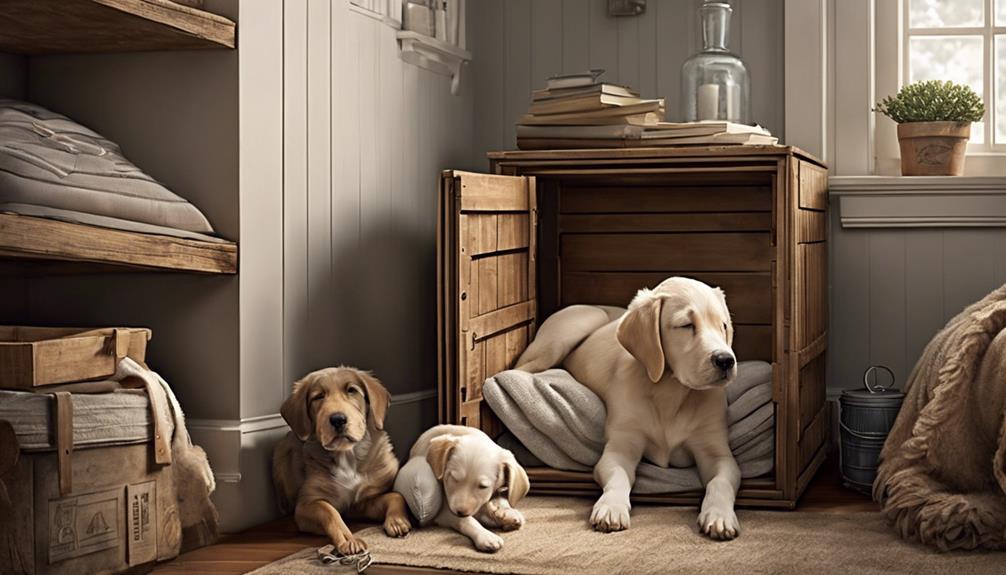
Older dogs benefit greatly from crate training in various situations, such as emergencies, transportation, illness, and stress relief. When training an older dog, it's important to understand that they may have established habits that could make the adjustment to crate training a bit more challenging. Consistency, patience, and creating a positive association with the crate are key elements to successfully crate train an older dog. It may take more time and effort to help them unlearn old habits and establish new routines, but with dedication and the right approach, it is achievable.
| Keyword | Description | Importance |
|---|---|---|
| Adjust | Older dogs may need time to adjust to crate training | High |
| Habits | Established habits can impact the training process | High |
| Consistency | Consistent training is crucial for older dogs | Very High |
| Patience | Patience is essential as older dogs might take longer to adapt | Very High |
| Positive Association | Creating a positive association with the crate is crucial | Very High |
| Unlearn | Older dogs may need to unlearn old habits before adopting new ones | High |
| Routines | Establishing new routines is important for successful crate training | High |
Sample Crate Training Schedule

To effectively crate train a puppy, establishing a sample schedule is essential for incorporating potty breaks, meal times, playtime, nap times, and crate time into a routine. This structured approach helps the 8-week-old puppy understand expectations and aids in their development.
Here's a sample crate training schedule to guide you:
- 8:00 AM: Wake up, potty break, followed by mealtime.
- 10:00 AM: Playtime and training exercises to stimulate mental and physical growth.
- 12:00 PM: Nap time in the crate to promote rest and prevent overstimulation.
Following a consistent schedule not only helps in crate training but also in reinforcing potty training habits. Remember to make the crate a positive space, gradually increasing crate time duration, and always supervise your puppy during playtime to ensure their safety and well-being. Consistency and patience are key in successfully crate training your 8-week-old puppy.
Nighttime Crate Training Tips
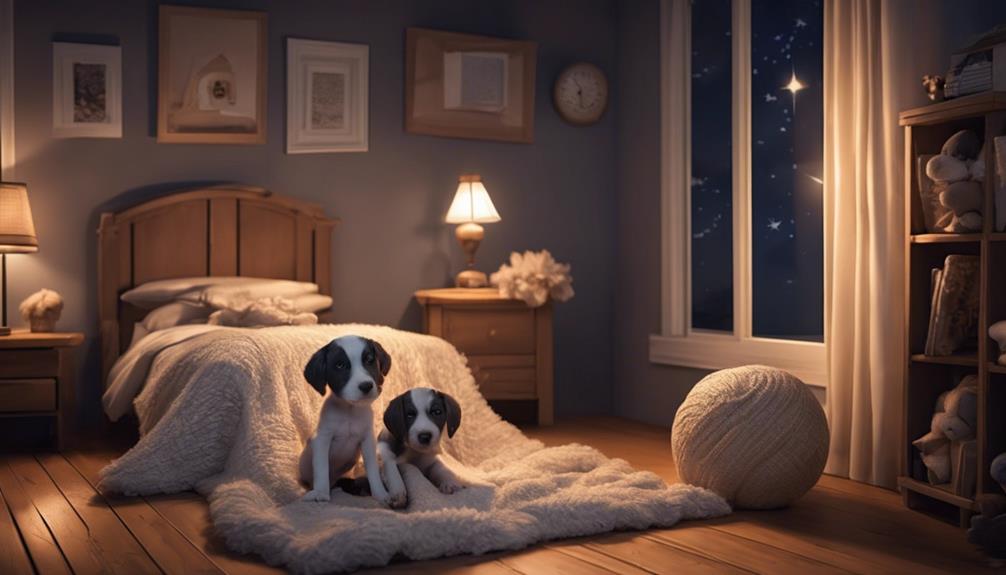
During nighttime crate training, establishing a routine that takes into account the puppy's age and bladder capacity is crucial for successful training. This can involve positioning the crate near your bed to offer comfort and reassurance to the puppy. This closeness allows the puppy to feel safe and can help minimize nighttime whining. It also simplifies your ability to promptly address the puppy's need for a potty break. Here is a straightforward guide to assist you in effectively managing nighttime crate training:
| Age of Puppy | Potty Break Frequency | Response to Whining |
|---|---|---|
| 8-10 weeks | Every 2-3 hours | Check for potty needs and act accordingly |
| 10-12 weeks | Every 3-4 hours | Watch for potty signals and respond as necessary |
| 12-16 weeks | Every 4-6 hours | Assess whining for potty or comfort-related reasons |
Common Crate Training Issues
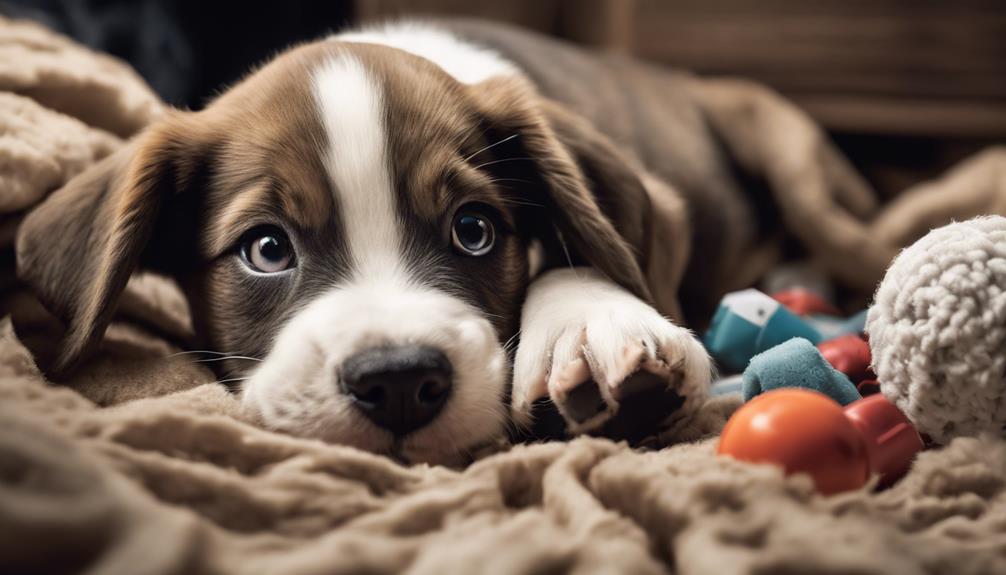
When it comes to crate training puppies, we've encountered common issues like potty training challenges and separation anxiety. These challenges can lead to whining, barking, or even attempts to escape the crate.
It's important to address these concerns with consistent training methods and techniques to help your puppy adapt positively to crate training.
Potty Training Challenges
Experiencing challenges such as whining, barking, and resistance can be common when potty training a puppy using a crate. To overcome these crate training issues, consider the following:
- Positive Reinforcement: Rewarding your puppy with treats or praise when they enter the crate willingly can help create a positive association.
- Gradual Acclimatization: Slowly introducing your puppy to the crate for short periods, gradually increasing the time spent inside, can reduce anxiety and stress.
- Comfort Items: Placing familiar toys or blankets inside the crate can make it a more inviting and comfortable space for your puppy.
Addressing these challenges with patience and consistency can lead to successful potty training and a positive crate training experience for your puppy.
Separation Anxiety Tips
To effectively address separation anxiety in puppies during crate training, it's essential to establish a sense of security and comfort within the crate environment. Crate training provides a safe space for the puppy, helping them feel secure when left alone. Gradual introductions to alone time, following a consistent schedule, can aid in managing separation anxiety.
Positive reinforcement techniques, such as rewarding calm behavior in the crate, can create a positive association with being confined. By incorporating routines and slowly increasing the time spent in the crate, the puppy can adjust and learn to be comfortable alone. Remember, patience and consistency are key in helping your puppy overcome separation anxiety through crate training.
Crate Training Do's and Don'ts
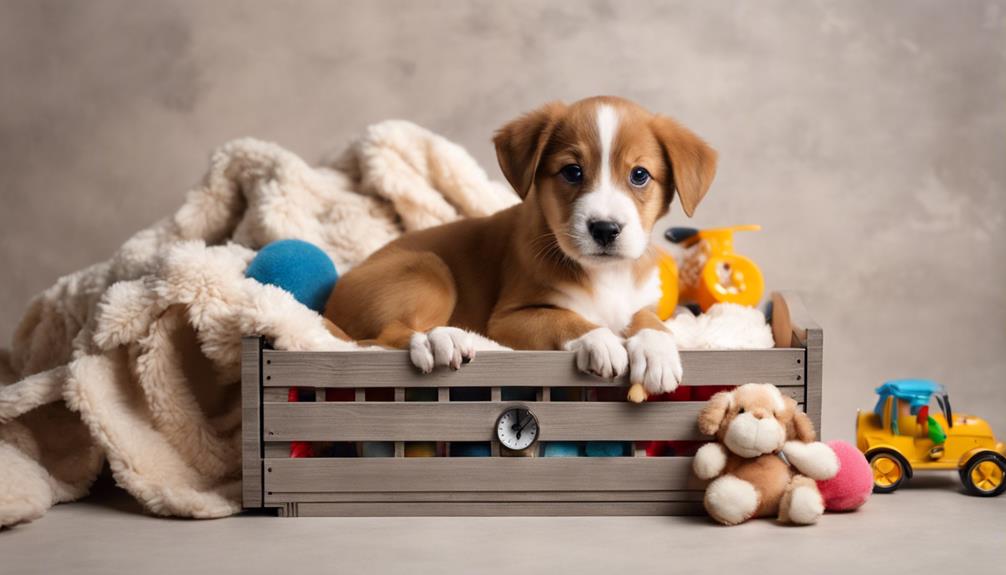
Introducing the crate to your puppy as a safe and comfortable space is key to successful crate training. When starting crate training, it's important to follow some do's and don'ts to guarantee a positive experience for your puppy:
- Do: Set up the crate with familiar items like blankets or toys to create a cozy environment.
- Do: Begin crate training gradually, starting with short periods and gradually increasing the time to avoid overwhelming your puppy.
- Do: Use positive reinforcement methods such as treats and praise to encourage your puppy to view the crate as a positive space.
Remember these significant points when crate training your puppy:
- Don't: Force your puppy into the crate as it can create negative associations.
- Don't: Use the crate for punishment, as it should be a place of security and comfort for your puppy.
- Don't: Scare or intimidate your puppy into the crate, as this can lead to fear and resistance.
Frequently Asked Questions
How Much Time Should I Crate My 8 Week Old Puppy?
We typically crate our 8-week-old puppy for 1 to 2 hours during the day. Gradually increasing crate time as they adjust to the routine is important. It's crucial to maintain consistency in the schedule to aid in their training and development.
What Is a Good Schedule for a 8 Week Old Puppy?
We establish routines for our 8-week-old puppy, allowing for regular potty breaks and crate time. Introducing the crate positively and sticking to a structured plan helps build good habits early on, fostering a well-adjusted and happy pup.
Can I Leave My 8 Week Old Puppy in a Crate for 2 Hours?
Yes, we can leave an 8-week-old puppy in a crate for up to 2 hours, as recommended. Puppies at this age have limited bladder control and need frequent potty breaks. It's important to follow this guideline to prevent accidents.
Can an 8 Week Old Puppy Sleep Through the Night in a Crate?
Yes, an 8-week-old puppy can sleep through the night in a crate for about 4-6 hours. Like a watchful guardian, we monitor water intake and potty breaks before bedtime to establish a consistent routine for successful crate training.
– What Are the Key Steps to Successfully Crate Train an 8-Week-Old Puppy?
When creating a puppy crate training schedule for your 8-week-old puppy, consistency is key. Start by slowly introducing the crate as a positive space for your puppy. Gradually increase the time spent in the crate and use positive reinforcement such as treats and praise. Stick to a regular routine to help your puppy adjust.
Conclusion
To sum up, crate training your 8-week old puppy is like building a strong foundation for a skyscraper. It sets the groundwork for a well-behaved and secure dog who feels at home in their crate.
By following a consistent schedule and providing positive reinforcement, you can help your furry friend grow into a confident and well-adjusted companion.
Remember, patience and perseverance are key to achieving success in crate training. Happy training!
